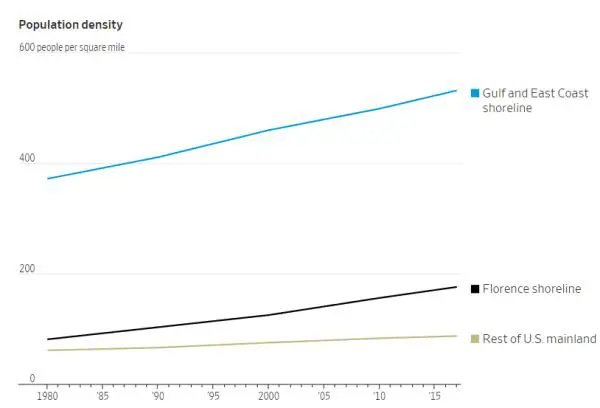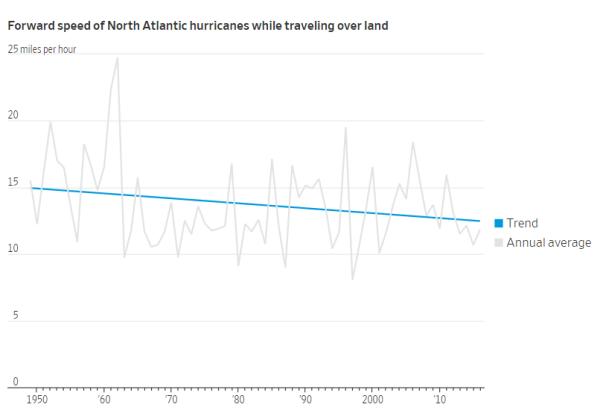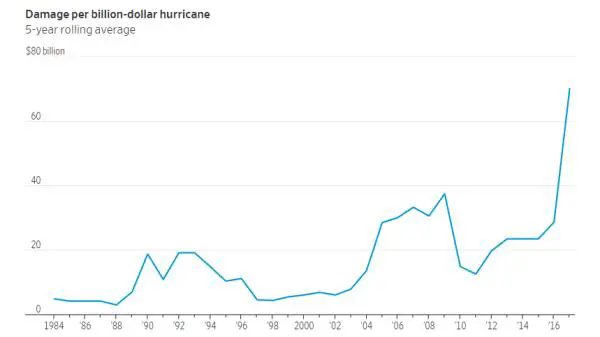The idea that as more people move to Hurricane Alley and other storm-prone places, the future cost of those storms will rise – and that we’re not accounting for that future cost and are therefore likely to be shocked by it – makes intuitive sense.
Now some recent studies have fleshed out the numbers, making it possible to tell this story visually (courtesy of yesterday’s Wall Street Journal). So here goes:
We’ve been encouraging people (through Federal Flood Insurance, artificially-low interest rates and state/local greed) to move from the interior of the country to the coasts, raising the population density of sunny but stormy locales like the Carolinas and South Florida:
All these new people need houses, stores, roads, etc., which means the cost of rebuilding after future storms is rising as well. Note on the following chart that completely rebuilding Naples, FL would for some reason cost 250% of municipal GDP:
Meanwhile, it turns out that a hurricane’s impact has less to do with the speed of its winds than with how long it sticks around, dropping rain and causing floods. So the important number is a storm’s “forward speed,” with slower being more damaging. And lately – perhaps due to warming ocean waters – storms have been slowing down:
So: Add more people to places that are seeing bigger, slower-moving storms, and the equation spits out higher damages per storm:
The conclusion? Rising storm damage for as far as the eye can see, with a real chance of a monster storm hitting a big city like Miami or New York and giving us a trillion-dollar summer, bankrupting some major insurance companies, depleting Federal Flood Insurance and forcing the federal government into yet another massive bail-out — just as federal deficits are exploding, public sector pensions are imploding, and student loans are defaulting en masse.






4 thoughts on "Another Trillion-Dollar Unfunded Liability, Part 2: Running The Hurricane Numbers"
Would better flood control investment in anticipation of a hurricane be a option. After all who would not pay a little more taxes for adequate flood control? The next hurricane is only a year away. Better than cost of flood insurance.
May 3rd, 2017: Puerto Rico files for bankruptcy.
September 20th, 2017: Hurricane Maria hits Puerto Rico.
When it rains, it pours.
You have taken care of the needs of the rich by asking them to emigrate to Panama but the rich are primary culprits for the state of affairs in all the institutions discussed in the article. The middle class will be left in the lurch as per your plan. Jesus Christ would feel sorry for such a plan which only takes care of the rich who may not find it easy to enter the heavens with their enormous selfishness.